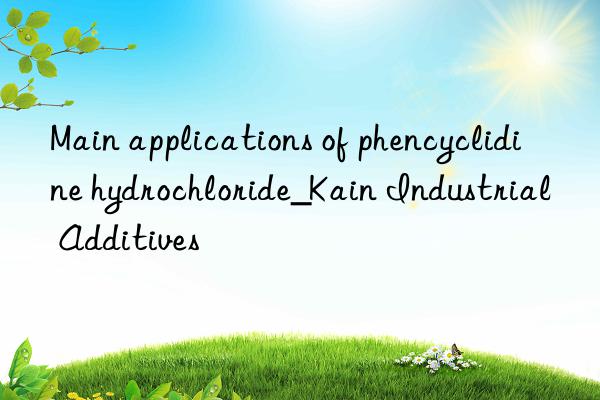
Background and overview[1]
Phencyclidine hydrochloride (pHencycliding, PCP) is a psychoactive drug that has inhibitory, stimulating, analgesic and hallucinogenic effects on the central nervous system. Its chemical name is 1-(1-phenylcyclohexane). Alkane) piperidine, PCP is a dissociative drug that was once used by anesthesiologists as an anesthetic and has psychedelic and neurotoxic effects. exuberant. It has been included in the specifications of narcotic drugs by national and international anti-drug conventions and is subject to strict control. At present, the detection of phencyclidine hydrochloride mainly relies on high performance liquid chromatography (HPLC), gas chromatography (GC), thin layer chromatography (TLC), mass spectrometry (MS), etc. However, the equipment is expensive and the detection is time-consuming. And it requires professional and technical personnel to operate, which cannot meet the fast and accurate requirements of modern testing. The immunoassay method can make up for all the above shortcomings. The immunoassay method is an analysis method that uses the specific binding reaction of antigens and antibodies to detect various substances (drugs, hormones, proteins, microorganisms, etc.). The premise of this method is that it needs to provide specificity. of antigens and antibodies. Therefore, it is necessary to provide an effective method for preparing phencyclidine hydrochloride artificial antigen. The prepared phencyclidine hydrochloride artificial antigen can be used for immunization to prepare specific phencyclidine hydrochloride antibodies. Further for detection.
Apply[2]
A psychoactive drug that has depressant, stimulant, analgesic and hallucinogenic effects on the central nervous system. Often results in an acute syndrome of disorientation, agitation, and delirium. Agents that produce similar effects are dextrobenzoxamine and ketamine. When PCP is used illegally, it is usually through smoke inhalation (it can also be taken orally or intravenously). It starts to take effect within 5 minutes and reaches its peak in about 30 minutes. Feelings of euphoria, warmth, tingling, floating and disconnected tranquility. Visual and auditory hallucinations, changes in body image, distortion of time and space perception, delusions and disordered thinking may also occur. Accompanying neurological and physiological symptoms are dose-related and include hypertension, nystagmus, ataxia, dysarthria, grimaces, profuse sweating, hyperreflexia, hyporesponsiveness to pain, muscle rigidity, hyperthermia, hyperacusis, and epilepsy. attack. The effects generally last 4 to 6 hours, but residual effects may take several days or longer to disappear. Self-injury or violent behavior may occur in the early stages of the effects of subsidence. PCP delirium, PCP delusions, and PCP mood disorder have been observed.
Adverse reactions[3]
After intravenous injection of phencyclidine hydrochloride, the anesthesia and analgesia have a rapid onset and strong effect, and the patient seems to be in a state of alertness. The respiratory and circulatory systems are not inhibited, and protective reflexes such as corneal reflex and swallowing reflex still exist. The main adverse reactions are extrapyramidal agonistic effects and psychotomimetic effects. Symptoms include incomplete muscle relaxation or even muscle rigidity; aimless shaking of the head, arm swinging, delirium, dream eating, disorientation, retrograde amnesia, hallucinations, visual distortion, and even aggressive behavior and other psychotic symptoms. The above-mentioned adverse reactions have a high incidence rate, are unpredictable, and last for a long time. Therefore, phencyclidine hydrochloride quickly loses its clinical application value.
Main reference materials
[1] CN201210104479.4 Preparation method of phencyclidine hydrochloride artificial antigen
[2] Dictionary of Diagnostics
[3] Research progress of phencyclidine hydrochloride drugs

 微信扫一扫打赏
微信扫一扫打赏

